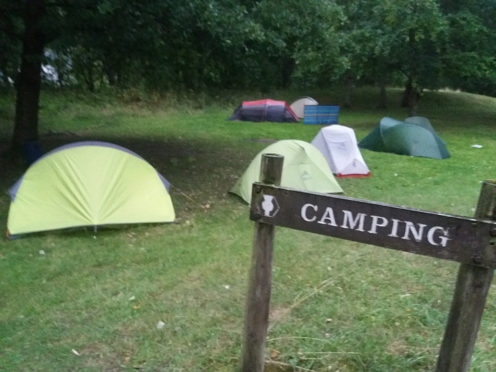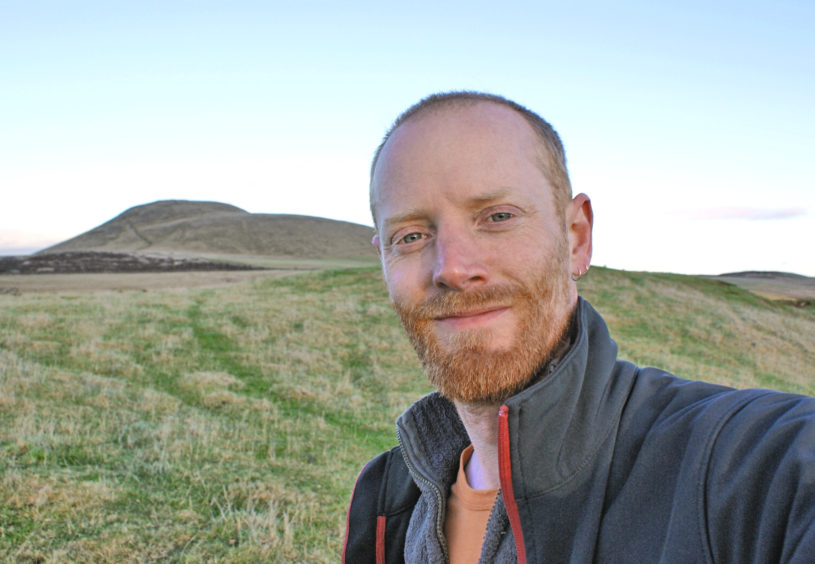We’ve all been there. Sitting in the darkness on a cool summer evening, mesmerised by flames in a way that not even the constant swiping of a phone can match.
Weirdly reassuring, a campfire goes beyond mere pleasure. It’s almost primeval, stamped on to our DNA as much as that innate desire for a panoramic hilltop view.
That fires can enrich a camping experience is beyond dispute, but our wild and beautiful places are undoubtedly feeling the heat.
Less restrictive than elsewhere in the UK, Scotland’s access rights do permit campfires but not in woodland, farmland, on peaty ground or anywhere at all during prolonged dry periods. Where does that leave? Hardly anywhere, really.
Heather, grass and gorse are the obvious dangers that we can see, but sometimes the greater risk comes from the ones we can’t, and if my two summers as a ranger in the Cairngorms taught me anything, it’s that surprisingly few people are aware of this.
We’re talking peat, of course. A soil. It doesn’t cover the whole country by any means, only about 20% in fact, but it does have a particular habit of underlying the kinds of places we like to camp.
Pine woodlands, spruce plantations, moorland edges, glens, uplands. Much of the Cairngorms, in fact.
Peat is dead vegetation, which after a few hundred million years of heat and compaction will turn into coal.
It might be spongy, wet and boot-sucking now, but it’s still pure carbon, it desperately wants to burn and it doesn’t have to be dry to do it.
Truthfully, you can’t always be sure what’s underneath your feet. Don’t, therefore, put all your faith in a magic ring of stones around your fire as a means to contain it, because this in no way prevents heat from spreading downwards and outwards through peat.
It can continue burning unseen for days after you’ve departed, until it surfaces elsewhere and ignites.
A few saucepans of water in the morning just won’t cut it either. I’ve attended numerous small campfires that burned for only half the night, but the following afternoon still needed 20 litres of water to fully saturate the ground, and a spade to dig them over just in case.
I always hoped campers would still be there when I arrived, because after I’d dug their scorched ground over and poured several buckets of purest Quoich on to it, I could invite them to feel for themselves how the soil was still too hot to touch.
Giving them the chance to feel that heat themselves, of actually having it shown to them kindly and carefully, often made all the difference in encouraging them to think differently.
Just one of the many vital roles of ranger services, by the way. Hello NTS!
If a fire is the be-all and end-all of your night, why not consider a serviced campsite where fires are permitted?
There are loads in Scotland. But if you still absolutely must have a “natural” campfire, then the default should always be a location well away from anything that might ignite, which includes the soil.
Riverbeds, on sand or gravel, are often the safest option.
Consider too, that everything in an ecosystem, living or dead, has a function. All the environmental impact stuff in bushcraft is about not cutting green wood, but in some forests as many as 40% of all species spend part of their lifecycles on or inside dead wood.
Take that part of the ecosystem away and the results are all-too predictable. In that sense it’s tempting to think “Ach, it’s just me”.
Well yes, maybe so tonight. But what about tomorrow night? Or the other 100 days of summer?
As wild and untouched as it might look out there, nowhere is off the beaten track any more.
Even if everyone is sparing and takes only small amounts of dead wood, the impact is still cumulative.
Visit any popular camping spot in Scotland and you’ll find the forest floor inadvertently stripped bare.
For cooking, a stove is so much safer and you won’t need to plunder the forest floor. As for disposable barbecues, never put them directly on vegetation. Instead, raise them off the ground using rocks.
Keep your fire small and supervised, with a water source nearby.
Use lots of water to extinguish it, poking a sharp stick repeatedly into the ground as you do so in order to puncture the surface and let the water seep downwards.
When the ashes are cold to the touch, scatter them widely, put stones back where you found them, restore the ground and carry all your litter out with you, including any you’ve burned.
You could laugh at all this I suppose, accuse me of being anti-fun and say I should hide indoors lest I step on an ant or squidge a midge.
Nah, we’ve got to be realistic, we can’t reduce our impact to zero.
But ultimately, if you choose to have a fire, the environment should be none the worse for it and the next person who comes along should be none the wiser.
Ben Dolphin is an outdoors enthusiast, countryside ranger and former president of Ramblers Scotland











